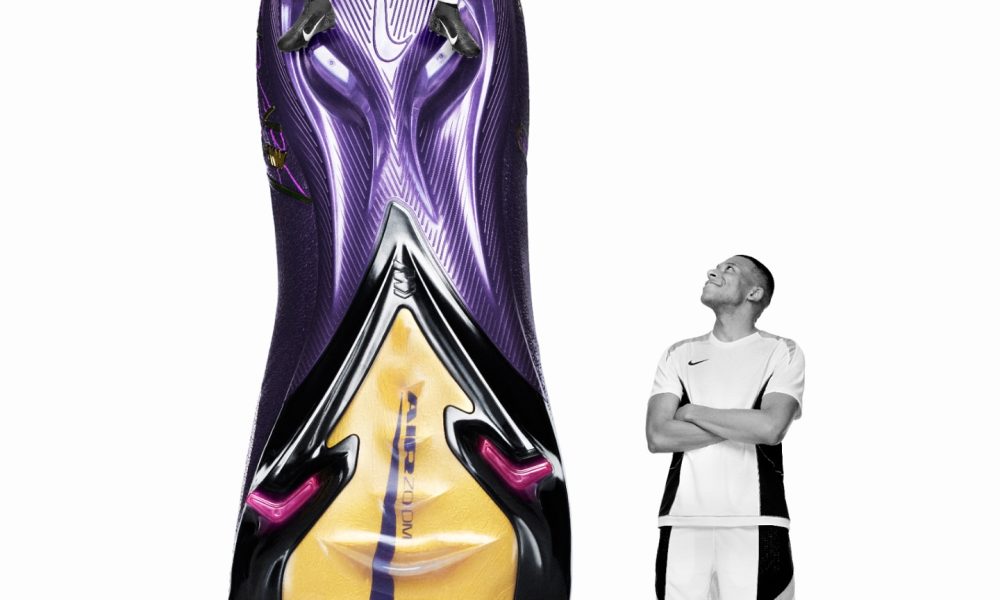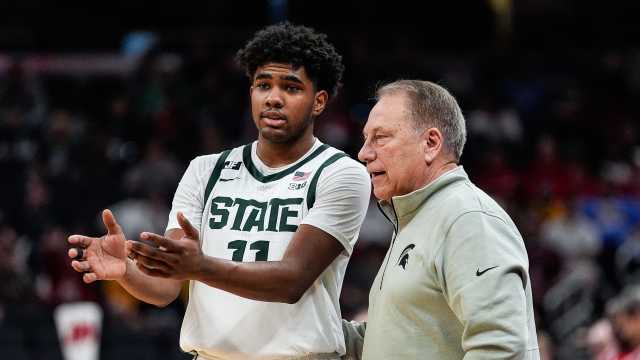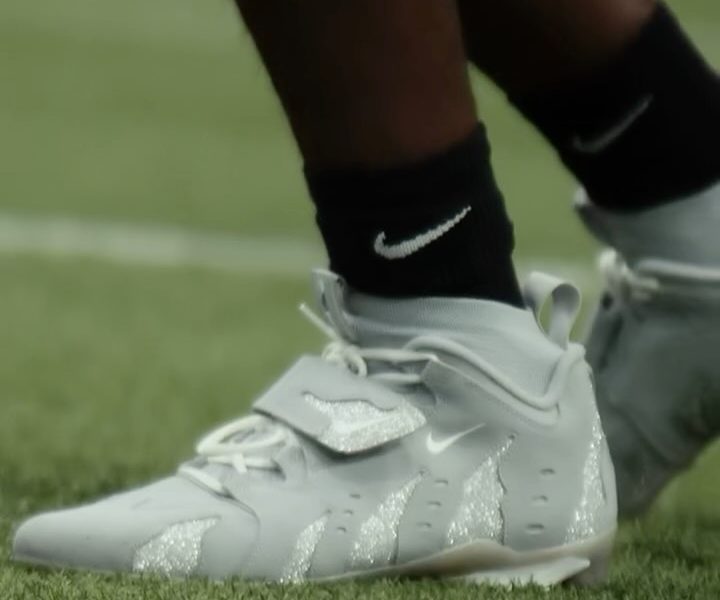NIL
Why are women forced to turn to TikTok for menstrual advice? Where are the brands?
But what’s even more extraordinary is how brands are entirely missing from this conversation. Women are talking about menstrual cycle syncing on TikTok. You’d be hard-pressed to find any brands adding to the conversation, particularly in sports. Iris’s Samaneh Zamani explores. A study titled Invisible Sportswomen: The Sex Data Gap in Sport and Exercise Science […]
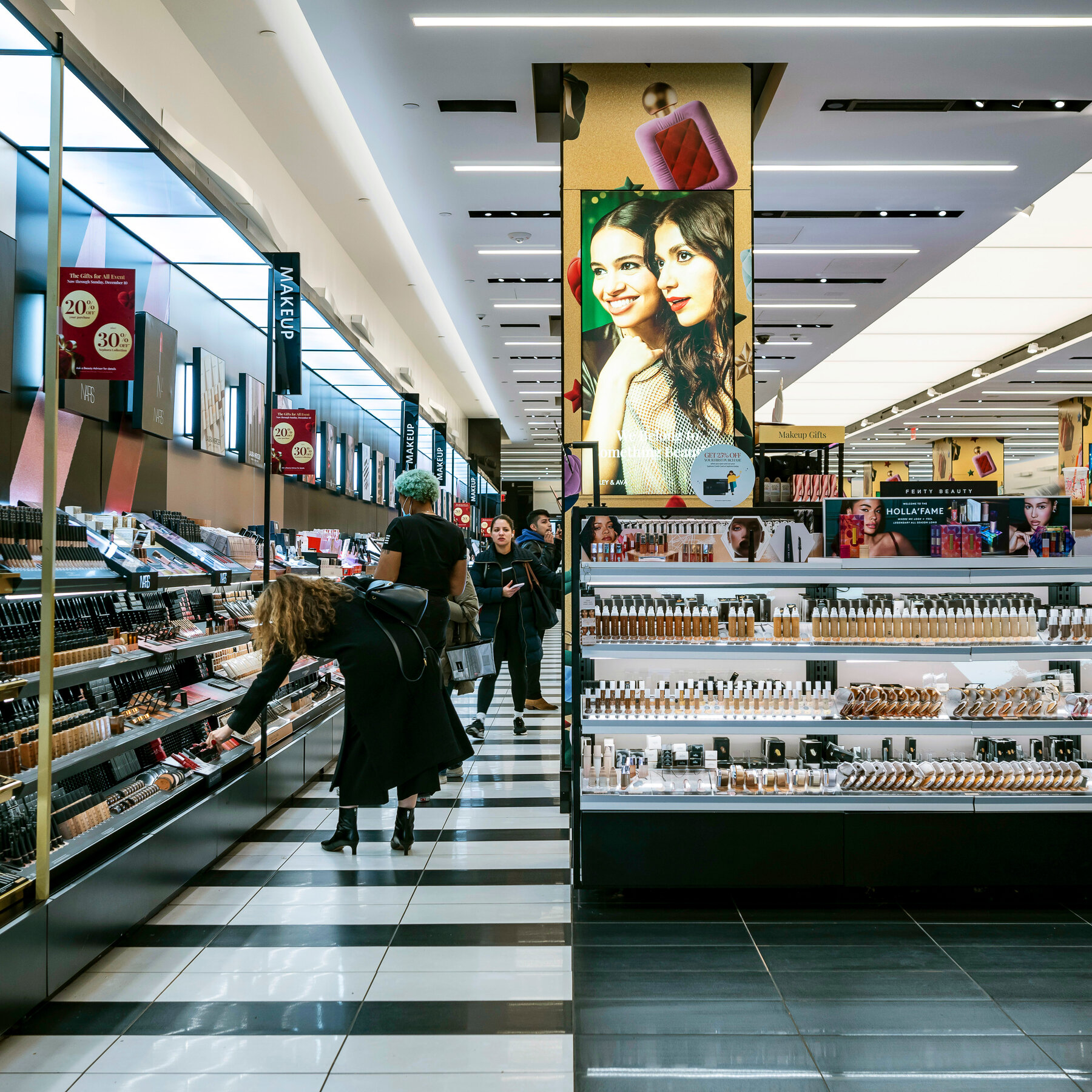


But what’s even more extraordinary is how brands are entirely missing from this conversation. Women are talking about menstrual cycle syncing on TikTok. You’d be hard-pressed to find any brands adding to the conversation, particularly in sports. Iris’s Samaneh Zamani explores.
NIL
Florida high school football faces wave of transfers, sparking intense competition among schools
Florida high school football faces wave of transfers It’s a shift that’s shaking up the high school football scene. Top high school football players in Florida are increasingly transferring to schools in pursuit of better exposure, competition, and future opportunities. SANFORD, Fla. – It’s a shift that’s shaking up the high school football scene. Top […]


Florida high school football faces wave of transfers
It’s a shift that’s shaking up the high school football scene. Top high school football players in Florida are increasingly transferring to schools in pursuit of better exposure, competition, and future opportunities.
SANFORD, Fla. – It’s a shift that’s shaking up the high school football scene. Top high school football players in Florida are increasingly transferring to schools in pursuit of better exposure, competition, and future opportunities.
What we know:
Top players are changing jerseys in search of bigger opportunities.
Seminole High School quarterback Michael Clayton II, already committed to the University of Illinois, is the latest to make a high-profile move — transferring to Miami Edison for his senior season. This trend reflects the growing influence of school choice policies and lenient FHSAA transfer rules, which allow athletes to switch schools with few limitations.
What we don’t know:
It remains unclear how this increase in player movement will affect team cohesion, player development, and long-term academic outcomes. There’s also uncertainty around whether future policy changes may limit such transfers, and how coaches will continue to adapt as mobility becomes a dominant factor in high school sports.
The backstory:
Florida’s school choice policies have expanded in recent years, allowing students to attend any public school with available space, regardless of district. This has opened the door for student-athletes to choose schools based on athletic opportunities rather than residency. For football players, the goal is often to gain more playing time, better coaching, or greater visibility to college recruiters.
What they’re saying:
The high school football landscape is increasingly mirroring the dynamics of college football, where Name, Image, and Likeness (NIL) deals and transfer portals have revolutionized player movement.
Some athletes transfer multiple times before graduation, reflecting a broader shift in priorities toward individual branding and competitive advantage.
“It’s gone from, you grew up in a school district, and you had to go to a school. Now with school choice, you can go to any school as long as there are seats available in that school,” Influencer Counsel Athlete Agent and Financial Advisor Dan LaForest told FOX 35 Sports.
Some athletes transfer multiple times during their high school careers.
It’s a move that makes long-term development difficult. However, with current FHSAA rules, players can move schools with little restriction.
“It’s tough on a high school coach. They have to create an environment that kids want to play. It’s not x’s and o’s anymore. I think x’s and o’s are a piece of it,” LaForest said.
STAY CONNECTED WITH FOX 35 ORLANDO:
The Source: This story was written based on information shared by the Florida High School Athletic Association, and Influencer Counsel Athlete Agent and Financial Advisor Dan LaForest.
NIL
Report: North Carolina men’s basketball NIL payroll tops $14 million
Last season, Hubert Davis made it clear changes would be coming at North Carolina. He promised to hire a general manager to help the program in the NIL and transfer portal landscape, and those investments are becoming clear. UNC’s NIL payroll is more than $14 million this year, according to a report from Inside Carolina. […]

Last season, Hubert Davis made it clear changes would be coming at North Carolina. He promised to hire a general manager to help the program in the NIL and transfer portal landscape, and those investments are becoming clear.
UNC’s NIL payroll is more than $14 million this year, according to a report from Inside Carolina. It’s part of the influx in support after the hiring of Jim Tanner as general manager and is almost triple the dollars from a year ago when the Tar Heels were the last team in the NCAA Tournament.
Tanner’s contract pays him $850,000 this year, according to the UNC salary information database. Additionally, the total compensation for the staff could be upward of $7 million, the report said. Davis also received a two-year contract extension after last season as the university started to invest in the program.
Davis was outspoken about North Carolina’s need to adapt in the changing landscape. General manager hires have become prominent across college sports, and Tanner’s NBA connections and experience as an agent are also important parts of the role. It also fits what Davis was looking for in the position.
“The old model for Carolina basketball just doesn’t work,” Davis said in February. “It’s not sustainable. It has to build out because there’s so many things in play with NIL, the transfer portal, agents, international players. You just need a bigger staff to be able to maintain things. You need a bigger staff so I can do what I’m supposed to be doing, and that’s coaching basketball.”
North Carolina will have a slew of new faces in town next season, fueled by the No. 15-ranked recruiting class in the country, according to the On3 Industry Team Recruiting Ranking. Five Star Plus+ forward Caleb Wilson headlines the group as the No. 5 overall player from the 2025 cycle, according to the On3 Industry Ranking, a weighted average that utilizes all four major recruiting media companies.
On the transfer front, the Tar Heels have five players coming in, led by former Arizona forward Henri Veesaar – the No. 25 overall player in the On3 Industry Transfer Rankings. UNC also recently landed a commitment from touted international guard Luka Bogavac as part of the roster overhaul.
North Carolina is coming off a 23-14 overall record in 2024-25 as it snuck into March Madness as the last team in the bracket. The Tar Heels won their First Four matchup against San Diego State before falling to Ole Miss in the first round.
NIL
NiJaree Canady Leads Texas Tech to First-Ever Softball National Championship Final
Over the years, college softball has produced numerous legends that have gone on to make a name for themselves in the sport, from Jennie Finch to Jessica Mendoza and everyone in between. But in recent years, former Stanford star and current Texas Tech standout, NiJaree Canady, has entered the conversation with an impressive 2025 season […]
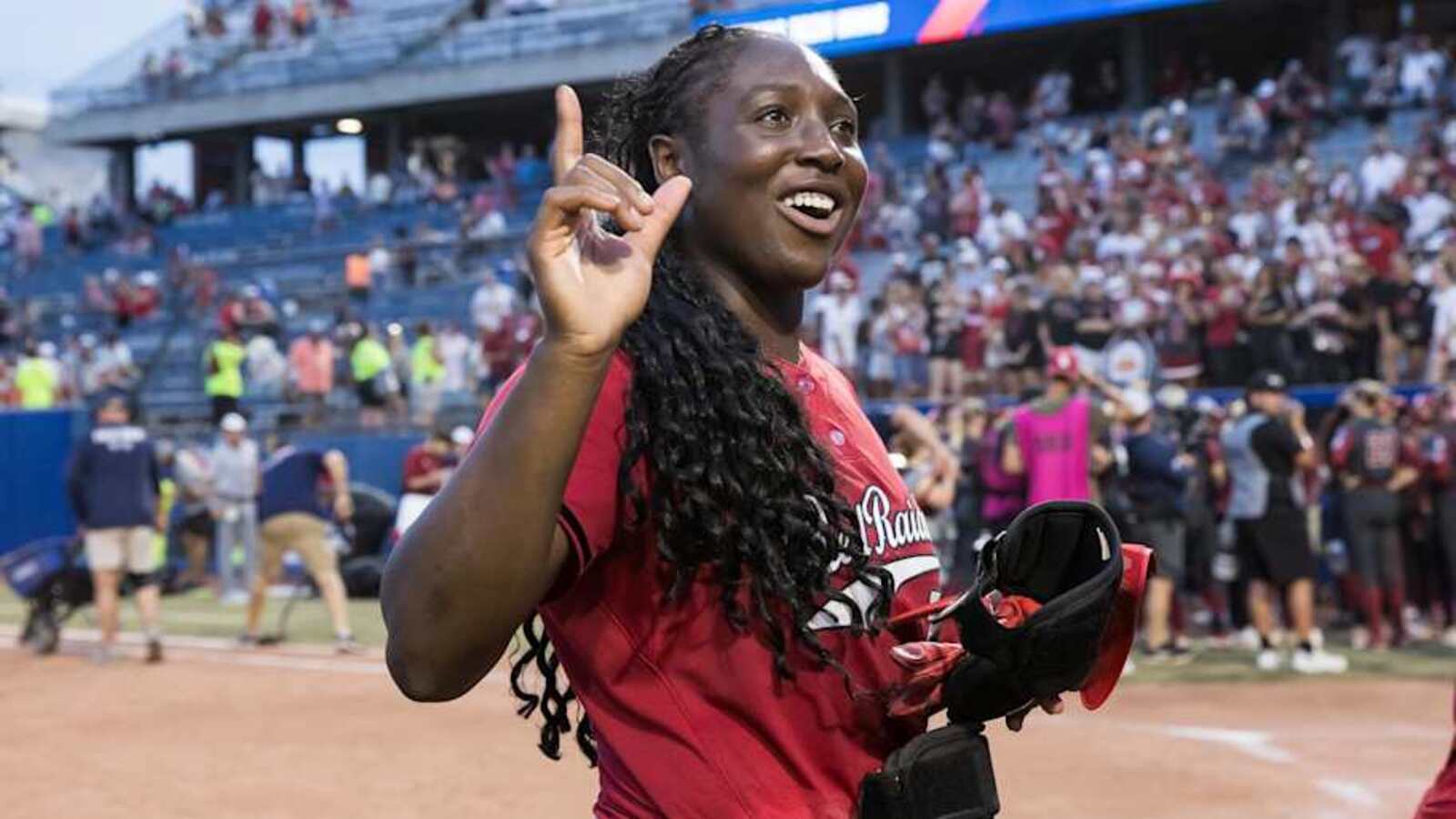
Over the years, college softball has produced numerous legends that have gone on to make a name for themselves in the sport, from Jennie Finch to Jessica Mendoza and everyone in between. But in recent years, former Stanford star and current Texas Tech standout, NiJaree Canady, has entered the conversation with an impressive 2025 season that included another Pitcher of the Year award win adding to her already strong resume.
However, this week Canady got one step closer to reaching the pinnacle of college softball by leading Texas Tech to its first ever Softball National Championship Final with an upset win over the nation’s top team, Oklahoma. Getting the start, another dominant outing from Canady put the Red Raiders through and only two wins away from capturing the school’s first-ever softball title.
Canady pitched all seven innings, allowing five hits, two runs and a walk as she struck out eight Oklahoma batters. The only runs she gave up came in the seventh inning when she allowed a game-tying two-run home run, but thanks to a sacrifice fly from Texas Tech first baseman Lauren Allred, the Red Raiders regained the lead in the bottom half of the inning and were able take home the win.
Aside from that one homer, Canady was superb and even managed to strike out one of Oklahoma’s best hitters in shortstop Gabbi Garcia, three times. For the game, Canady threw 106 pitches and pitched her fifth consecutive complete game. At the plate though, Canady went 0-for-3 and left two runners on base.
With the Red Raiders are in the championship, Canady is needed now more than ever. Texas, a softball powerhouse, is in its second straight WCWS championship and their third in four years.
Having been one of the top teams in the nation since their first season as a program in 1997, Texas knows what it needs to do to win it all and after experiencing heartbreak during both of their championship appearances, this whole season has been about getting over the hump.
But Canady was brought to Texas Tech for this exact reason. A headlining player at Stanford, Canady received a record-breaking NIL deal for a softball player, ensuring that she would be the focal point for this year’s Texas Tech team.
The Red Raiders have a strong pitching staff that also includes Chloe Riassetto and Samantha Lincoln but when it comes to big game moments, Canady has been relied on to get things done.
The WCWS championship begins on Wednesday, June 4 and will take place at Devon Park in Oklahoma City, ending either on June 5 or June 6 depending on how the first two games play out. Each game will air on ESPN.
NIL
DOJ weighs in on NCAA eligibility lawsuit
The Department of Justice evaluated a lawsuit by Zakai Zeigler challenging the NCAA’s limit on extra-year eligibility. KNOXVILLE, Tenn. — The United States Department of Justice is weighing in on a lawsuit filed by former University of Tennessee basketball player Zakai Zeigler, who is challenging the NCAA to play for an additional year while collecting […]

The Department of Justice evaluated a lawsuit by Zakai Zeigler challenging the NCAA’s limit on extra-year eligibility.
KNOXVILLE, Tenn. — The United States Department of Justice is weighing in on a lawsuit filed by former University of Tennessee basketball player Zakai Zeigler, who is challenging the NCAA to play for an additional year while collecting compensation for his name, image and likeness.
Zeigler, who recently graduated from an undergraduate program, said in the lawsuit that he plans to pursue a graduate program at UT. He is the latest in a list of college athletes filing lawsuits against the NCAA, saying he hopes to compete in his fifth year of college basketball, arguing that he has a five-year eligibility window, despite already graduating from UT’s undergraduate program.
The lawsuit argues that an “arbitrary” National Collegiate Athletic Association rule limits student-athletes to participating in four seasons of competition. It also claims the NCAA’s rule violates the Sherman Act, constituting an “unreasonable restraint of trade” because when student-athletes’ eligibility ends, they are effectively locked out of the NIL market.
The lawsuit argues that many other student-athletes compete during their fifth year of eligibility and earn compensation for their name, image and likeness while playing. The lawsuit said Zeigler’s NIL valuation for the 2025-2026 season ranges between $2 million and $4 million.
In a document filed Monday, the DOJ’s Antitrust Division submitted a Statement of Interest, stating how the Sherman Act should be applied in this case. While the federal government is not siding with either party, they are urging the court to use a rule of reason approach to determine whether the NCAA’s eligibility rule harms or helps competition in the student-athlete labor market.
The National Collegiate Athletic Association responded to the lawsuit Monday and argued that eligibility rules are non-commercial in nature and fall outside the scope of the Sherman Act.
The DOJ also noted that while some NCAA rules might have some benefits, they should be judged on their impact. The Justice Department emphasized that restrictions that limit their ability to compete or earn NIL income could be “anticompetitive,” and that the court shouldn’t assume NCAA rules are legal or illegal but examine the facts.
A hearing on that request is scheduled for June 6 in the U.S. District Court for the Eastern District of Tennessee.
NIL
Texas freshman 3B Sam Richardson enters NCAA transfer portal
According to On3’s Pete Nakos, Texas freshman third baseman Sam Richardson has entered the NCAA transfer portal. Richardson spent just one season on the 40 Acres, being a former highly-rated recruit out of Olive Branch, MS. A loss for head coach Jim Schlossnagle just days after the 2025 season ended. Perfect Game rated Richardson as […]



According to On3’s Pete Nakos, Texas freshman third baseman Sam Richardson has entered the NCAA transfer portal. Richardson spent just one season on the 40 Acres, being a former highly-rated recruit out of Olive Branch, MS. A loss for head coach Jim Schlossnagle just days after the 2025 season ended.
Perfect Game rated Richardson as the No. 39 overall player in the 2024 recruiting class and No. 3 when looking just at third basemen. He finished at the top of his position rankings in the state of Mississippi but fell short of the same accolade overall. Richardson was No. 2 in the Magnoilia State.
Texas earned a commitment from Richardson back in Aug. 2023 before pen was officially put to paper well over a year later. However, Richardson was previously committed to play for a different SEC school — the Missouri Tigers.
Now, if Missouri (or other schools inside the SEC) is still interested, Richardson is set to be on the open market. A redshirt allows him to maintain four years of eligibility, giving the corner infielder plenty of time to develop at his next stop. A bit name as the college baseball transfer portal begins to ramp up following NCAA Tournament regionals.
More on Jim Schlossnagle’s first season at Texas
There were no doubt some positives for Schlossnagle during his first season at Texas. None bigger than winning the SEC regular season, taking down some of the conference’s top programs along the way. Schlossnagle even claimed doing so was tougher than winning the national championship.
Another highlight was Texas welcoming Texas A&M to Austin, a weekend series with a little more juice than usual. Given Schlossnagle’s departure from the Aggies a year ago, and the rivalry returning as a conference matchup, both teams were going to be amped up. Texas emerged with a three-game sweep, something Longhorn fans will not forget to mention for a long time.
Being named the No. 2 overall seed and hosting a regional in the NCAA Tournament is even something to celebrate. However, the festivities cut off pretty quickly. UTSA was able to eliminate Texas in the regional final, ending Year 1 for Schlossnagle.
The head coach will have plenty to work with heading into the 2026 season, despite some names entering the transfer portal. Texas will want the postseason results to be better though, hoping for a run toward the program’s first national championship since 2005.
NIL
Greg Sankey reveals NCAA Tournament expansion lasted ‘maybe lasted five minutes’ at SEC meetings
Last week, NCAA president Charlie Baker told reporters that the NCAA Tournament could expand to 72 or 76 teams by 2026. During an appearance on the “Dan Patrick Show,” SEC commissioner Greg Sankey revealed how his conference coaches reacted when he brought up tournament expansion. “I introduced the issue to our men’s basketball coaches, which […]

Last week, NCAA president Charlie Baker told reporters that the NCAA Tournament could expand to 72 or 76 teams by 2026. During an appearance on the “Dan Patrick Show,” SEC commissioner Greg Sankey revealed how his conference coaches reacted when he brought up tournament expansion.
“I introduced the issue to our men’s basketball coaches, which I think we’ve talked about with that group before. I would guess then, given the other issues we had on our plate, that conversation maybe lasted five minutes,” Sankey said. “My points to them were, this is still a work in progress.
“I didn’t know that there was going to be kind of a press gathering. This is not a criticism. Charlie Baker spoke about tournament expansion, I think, the day after our basketball coaches gathered. I mentioned it to our women’s basketball coaches as well briefly. It didn’t really go anywhere.”
The announcement from Baker has divided the college basketball landscape. Some fans are excited to see more teams have the chance to participate in March Madness. Meanwhile, others claim that adding teams to the historic tournament, dilutes the importance of the event.
Of course, from the NCAA’s perspective, tournament expansion is mostly about finances. More games equals more money. The NCAA Tournament last expanded in 2011 when it changed from including 64 teams to 68, with the addition of the First Four round of games.
Prior to that, the format of March Madness had remained unchanged since the 64-team field was first adopted in 1985. Greg Sankey still doesn’t know if expanding the tournament is the best move.
“We should be exploring tournament expansion. Whether or not it happens, is actually another point of evaluation,” Sankey said. “So have the conversation, deep dive, figure out if it works, practically, competitively, economically.
“I think the one issue for us is, if it is expanded, let’s pick the number of 76 and I’ll do quick math for you. So 52 of the 76 teams would be like in that traditional first round. The other 24 would play in 12 games. The 12 winners meet up with the 52. There’s your 64-team bracket, right? That’s like from my intramural director days at Utica. So I know how brackets work. What I’m really interested in, we’re interested in, is who fills those 12 games, those other 24 teams?”
Only time will tell. However, judging from Baker’s latest statements, college basketball fans might be learning more about an expanded NCAA Tournament sooner than they’d previously expected.
-

 College Sports2 weeks ago
College Sports2 weeks agoPortal Update – Basketball and Gymnastics Take Hits
-

 Rec Sports3 weeks ago
Rec Sports3 weeks agoThe Program, a New Basketball Training Facility, Opening in Greenpoint This September
-

 College Sports2 weeks ago
College Sports2 weeks agoPortal Update – Basketball and Gymnastics Take Hits
-

 Professional Sports2 weeks ago
Professional Sports2 weeks agoJon Jones answers UFC retirement speculation as fans accuse champion of 'holding the belt …
-

 NIL1 week ago
NIL1 week ago2025 NCAA Softball Tournament Bracket: Women’s College World Series bracket, schedule set
-

 Health2 weeks ago
Health2 weeks agoBYU women's basketball guard injures ACL twice
-

 Youtube2 weeks ago
Youtube2 weeks agoXavier Legette taught Marty Smith his signature celly
-

 Motorsports2 weeks ago
Motorsports2 weeks agoWhy IHOP Rode With Dale Earnhardt Jr. In Amazon NASCAR Debut
-

 College Sports2 weeks ago
College Sports2 weeks agoIU basketball recruiting
-

 College Sports2 weeks ago
College Sports2 weeks agoNCDC Commitment Profiles: Cyclones’ Martins Moving On to Saint Anselm College • USPHL









































 | First Take
| First Take


















